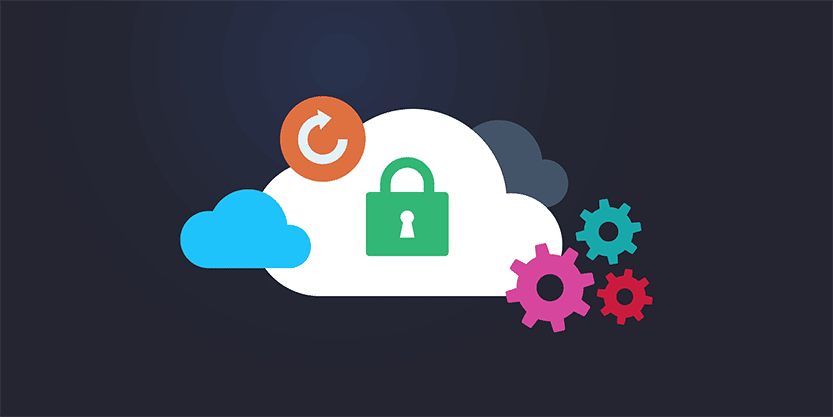Customizable Saas Backup Vs On-Premises Backup For Large Enterprises
Customizable Saas Backup Vs On-Premises Backup For Large Enterprises
Blog Article
Modern Backup Solution For Dropbox Quick Guide
Organizations must overcome the crucial challenge of protecting their valuable information as digital data storage becomes more and more important. By offering safe and easily accessible storage for important data, cloud database backup offers a remedy. We will discuss the advantages and significance of cloud database backup in this article, as well as the best methods for putting it into practice and effectively managing it.
- Recognizing Cloud Database Backup
The act of storing copies of your database online in a remote server or data center is known as cloud database backup. It offers an off-site backup option that guarantees data redundancy, hardware fail-safeness, natural disaster protection, and cyber threats.
- Benefits of cloud database backup
Cloud-based Cloud Native Backup In the Cloud Era
Compared to conventional backup techniques, cloud database backup offers a number of benefits. These comprise:
Data redundancy: By storing data across multiple servers, hardware failures and disasters are less likely to result in data loss.
Scalability: With cloud backup, you can quickly increase or decrease the amount of storage you need depending on your needs.
Accessibility: With cloud backup, any internet-connected device will allow you to access your data whenever, wherever you want.
Cost-effectiveness: Cloud backup does away with the need to spend money on expensive backup personnel, infrastructure, and maintenance.
Automated Backups: By automating scheduling and incremental backups, cloud backup services frequently eliminate the need for manual backup.
- Selecting the best Cloud Database Backup Service:

Think about the following when choosing a cloud database backup provider:
Intuitive Backup Solution For Dropbox Data Protection Strategies
- Security Measures: Make sure the service provider uses reliable security measures like compliance certifications, access controls, and encryption.
- Reliability: Look for businesses that have a solid reputation for dependability and long-term warranties.
- Scalability: Verify that the service provider provides storage options that are adaptable to your expanding data requirements.
For quick and effective data transfers, take into account the provider's network infrastructure and bandwidth capabilities - Backup Solution For Personal Laptop.
- Using cloud database backup to implement:
Use these best practices to implement cloud database backup successfully:
- Define Backup Policies: Clearly specify your backup requirements, including the frequency, retention, and recovery point goals.
- Encryption: To guarantee the integrity and confidentiality of your data, encrypt it before moving it to the cloud.
- Regular Testing: Verify the veracity and completeness of your backups by regularly testing the restoration process.
Implement monitoring and alerting systems to quickly identify problems or failures in the backup procedure.
- Disaster Recovery Plan: Create a thorough disaster recovery plan that outlines how to recover data in the event of an emergency.
Innovative Image Based Backup Solutions In 2024
- Managing a backup cloud database
Continuous monitoring and upkeep are necessary to manage cloud database backup. S3 Backup Software Windows. Think about the following advice:

- Regularly Monitor Backups: Keep an look at this web-site eye on the backup procedure to make sure it goes smoothly and quickly fix any mistakes or failures.
- Review and update backup policies on a regular basis to keep up with evolving regulatory requirements and changing business needs.
- Retention Management: Depending on business priorities and legal requirements, control how long your backups are kept.
Implement data archiving techniques to transfer infrequently accessed data to cost-effective storage tiers while maintaining accessibility.
Periodic Reviews: Review your cloud database backup strategy on a regular basis to spot areas for improvement and make sure it complies with company objectives.
Messages to Remember:
Simplified Windows Home Server Online Backup In Detail
Data redundancy, scalability, accessibility, cost efficiency, and automated backups are just a few of the advantages of cloud database backup, which offers secure and accessible storage for important data.
- When selecting a provider, take security precautions into account, as well as dependability, speed of data transfer, and reliability.
Creating backup policies, encryption, routine testing, monitoring and alerting, and creating a disaster recovery plan are all components of cloud database backup implementation.
Regular backup monitoring, backup policies updates, retention management, data archiving, and periodic reviews are all necessary to effectively manage cloud database backup.
Remember that i loved this protecting the sensitive data in your organization requires the implementation of a solid cloud database backup strategy. To ensure data security, accessibility, and business continuity, embrace cloud backup's power.
Key Takeaways or a related phrase (Online Backup Music)

Data redundancy and protection against hardware failures or disasters are guaranteed by cloud database backup.
Scalability, accessibility, cost effectiveness, and automated backups are some of the advantages.
When selecting a provider, take security precautions into account, as well as dependability, speed of data transfer, and scalability.
- Adopt best practices like disaster recovery planning, encryption, regular testing, monitoring, and alerting.
Monitoring backups, updating policies, managing retention, putting data archiving into place, and conducting periodic reviews are all part of effective management.
Report this page